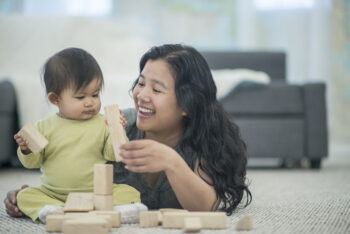 This holiday season, parents, caregivers, family and friends may be on the lookout for special gift ideas for the children in their lives. With so many choices available in person and online, it can feel overwhelming to find something that is both fun and safe.
This holiday season, parents, caregivers, family and friends may be on the lookout for special gift ideas for the children in their lives. With so many choices available in person and online, it can feel overwhelming to find something that is both fun and safe.
Depending on a child’s age, there are certain toys with small parts or sharp edges, long cords or strings, magnets, button batteries and balloons that may be best to avoid due to their potential health risks.
In 2022, the U.S. Consumer Product Safety Commission found that over 200,000 children were treated in emergency departments across the country due to toy-related injuries.
Product recalls for children’s products were also at their highest in over 10 years due to hidden hazards and excessive lead content, according to a report released by KID in early 2023.
Researchers have also been investigating the pediatric health outcomes of phthalate exposure, a chemical used in some plastic products including toys, due to growing safety concerns.
With so much to consider, Dr. Sheela Sathyanarayana, a pediatrician and environmental health specialist at Seattle Children’s, shares key toy safety tips to help make the process of selecting gifts easier.
What should people skip when choosing gifts for kids?
Dr. Sathyanarayana: Babies and toddlers put a lot of things in their mouths, so plastics are not a good choice for little ones ages 0 to 3. Plasticizers expose kids to man-made chemicals that affect hormones like estrogen and testosterone. These chemicals can potentially interfere with normal growth and brain development.
Children have higher intakes of these chemicals compared to adults because of behaviors like putting things in their mouths and breathing faster than adults.
Young children should also avoid playing with toys that have button batteries or multiple magnets. Too often, children swallow button batteries (partially or completely) or get them stuck in their ears or noses. In addition to being a choking hazard, the batteries can burn the delicate tissue inside the ears, nose and esophagus. Swallowing two or more magnets can cause them to stick together inside of a child’s body and cause injury or death. Adults should remind older children who do play with toys with magnets to refrain from putting them in their mouth.
Cheap, brightly colored jewelry can also be a concern. We’ve found that the paint on that jewelry can contain high levels of lead. Exposure to lead at any age and any concentration is not safe. It can affect a child’s brain development and lead to headaches, stomach pain, behavioral problems and anemia.
Are wooden, natural or organic toys a better choice for children?
Dr. Sathyanarayana: Wood toys would be a better choice for young toddlers and babies. We’ve found those toys generally do not contain chemicals that raise concerns. Parents and caregivers should check for splinters or sharp edges on wooden toys, and sand them if needed, however avoid old wooden toys with chipped paint. If toys are repainted, use new paint as old paint may contain lead.
Stuffed animals and soft materials can harbor bacteria, so parents should make sure to wash those toys frequently. Adults should periodically check stuffed animals for eyes, noses and parts that can come off. Soft baby toys should be large enough that they can’t be swallowed even when they are squished down.
The term ‘natural’ has no technical meaning and is frequently used as a marketing tool. Most people associate the term ‘organic’ with food, and the government provides regulatory rules for what products can be labeled organic. There are types of textiles such as cotton and other fibers found in toys that can be certified organic.
That said, we have found that even organic food can contain chemical contaminants and we’re researching why that is. The terms ‘organic’ and ‘natural’ don’t hold much weight in determining the safety of toys right now, so I would encourage parents to take those terms with a grain of salt.
What toys do you recommend and how can I help keep my child safe while playing?
Dr. Sathyanarayana: The best way to protect children is to watch them while they play and to make sure that toys are age appropriate. Ensure that toys are stored in a safe place, check them often for damage, throw plastic wrap and other packaging away after opening, and read all toy instructions.
For little ones in an age group where they put things in their mouths, the number one takeaway would be to opt for wood toys and avoid plastics because of chemicals that disrupt normal development at a critical age. Soft, plastic squeezy bath toys should not be sucked on as the water heat can increase the chances of chemical transfer by mouth. Books that are made out of paper or wood fibers are also better alternatives to puffy, plastic books marketed for babies.
For parents considering choosing art and science kits for older children, it’s important to note that some contain paints and compounds that are toxic if ingested, so I would urge parents to make sure the toys they buy are age appropriate. The labels on toys indicating age recommendations are a helpful guide.

